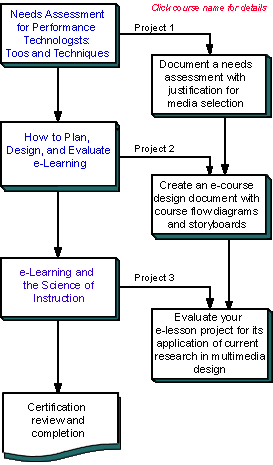Skills Demonstrated in the Program
Human Performance Technology
Design and Evaluation of e-Learning
E-Learning and the Science of Instruction
Benefits of Certification
How the program works
During each course, you will start a project that will be continued and completed at your worksite. After each course you will apply your new skills at your work site to complete projects that demonstrate your competencies.
Project Summaries
Human Performance Technology and Needs Assessment
Design of e-Learning
Research on e-Learning $69,950
